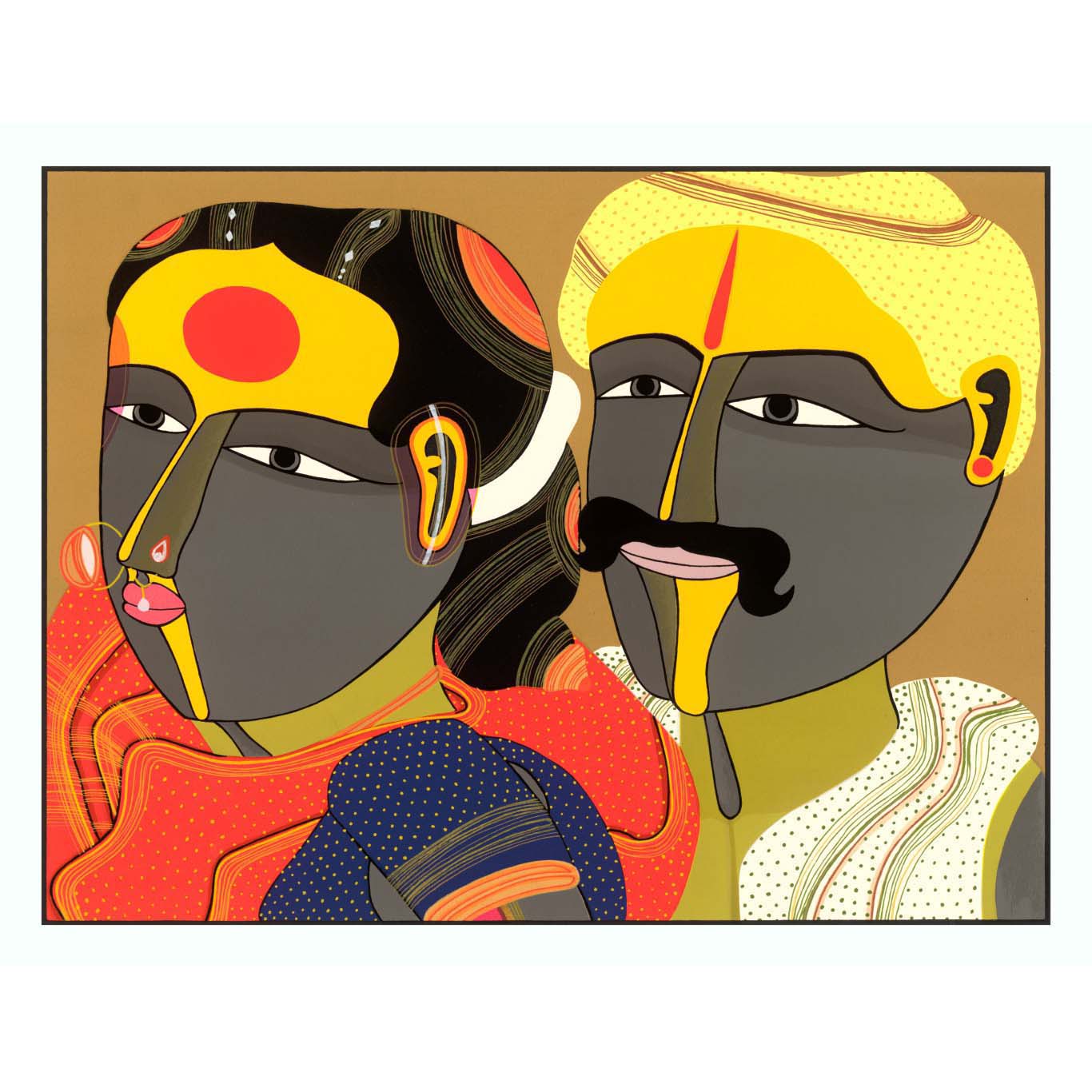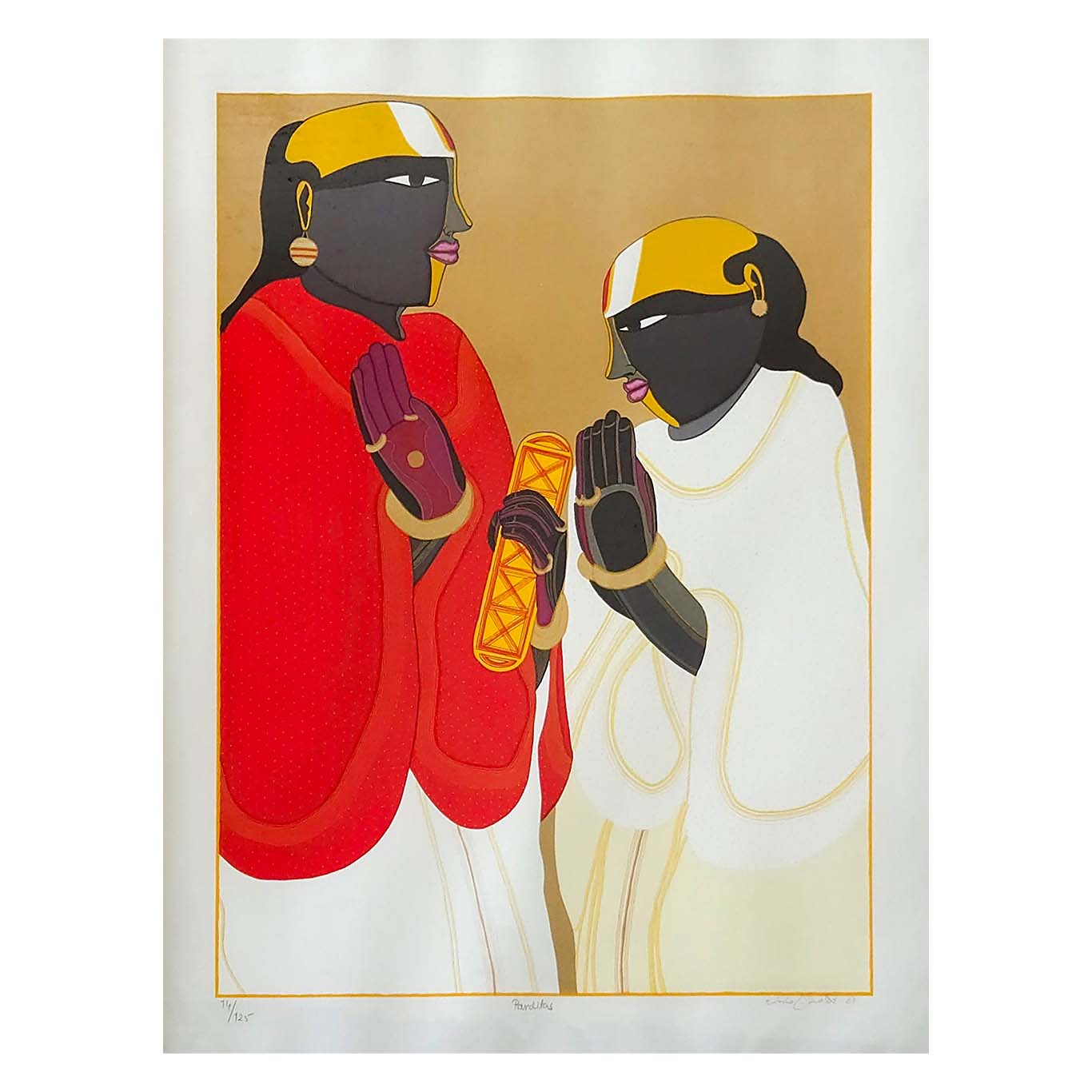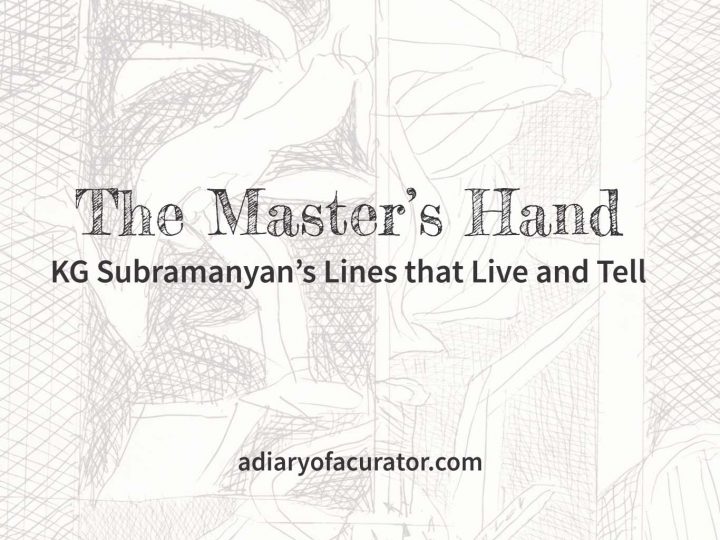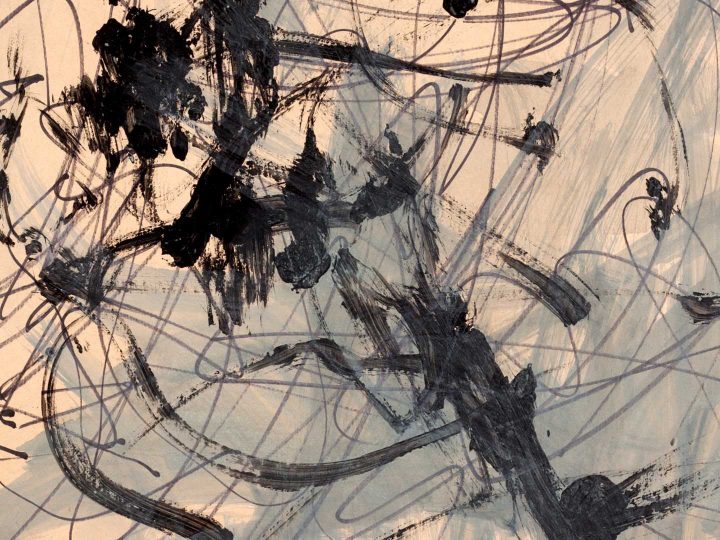Thota Vaikuntam (born 1942) is an Indian painter renowned for his vibrant depictions of the Telangana region’s men and alluring women. His muse is the sensuous, voluptuous women of Telangana, characterized by their distinctive vermilion bindis and colorful sarees that accentuate their dusky skin. The stylization in his paintings serves as a perfect complement to Indian classical dance, with figures appearing to dance in a statuesque manner reminiscent of temple friezes. Vaikuntam employs the brightest reds and yellows, transforming simple women into larger-than-life subjects that fill the small formats of his paintings, often adorned in bright handwoven sarees.
His stylized portraits emphasize the garments and accessories of his subjects, earning him numerous accolades, including the Bharat Bhavan Biennale Award in 1999 and the National Award for Painting from the Government of India in 1993. He trained at Maharaja Sayajirao University of Baroda under the Indian modern art pioneer K.G. Subramanyan.
In Vaikuntam’s works, bright primary colors invigorate fluid forms, coming together to create distorted perspectives of his subjects. He often places his figures against monochrome backgrounds to highlight their ornate clothing and adornments. To authentically capture the simple lifestyle of villagers, Vaikuntam uses equally simple colors in his original paintings and fine art prints. He explains, “I like using rich, primary colors in my paintings, which give them a sense of character and depth. Red, saffron, and even orange are essentially Indian colors, and I use them extensively. However, colors that are a mix of two are not natural, as they don’t exist in our surroundings or everyday life.”
His works evoke Shringara Rasa. The use of rich, primary colors and the stylization of figures also evoke feelings of joy and admiration.
Photos and Text © Chaitya Dhanvi Shah
printing, distribution or copying of this text/images without permission is not allowed.








